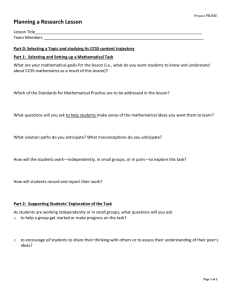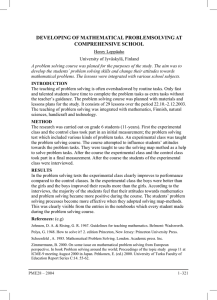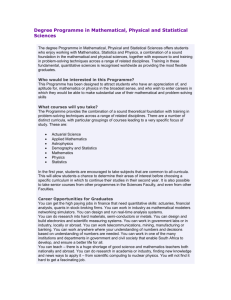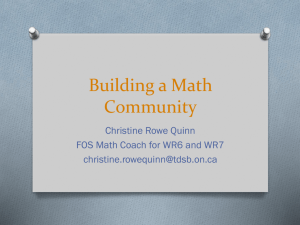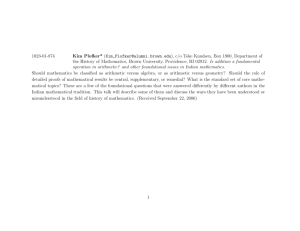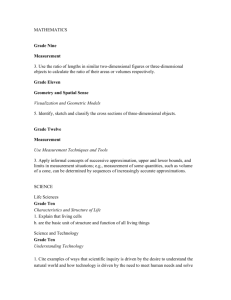Communicating mathematical thinking
advertisement
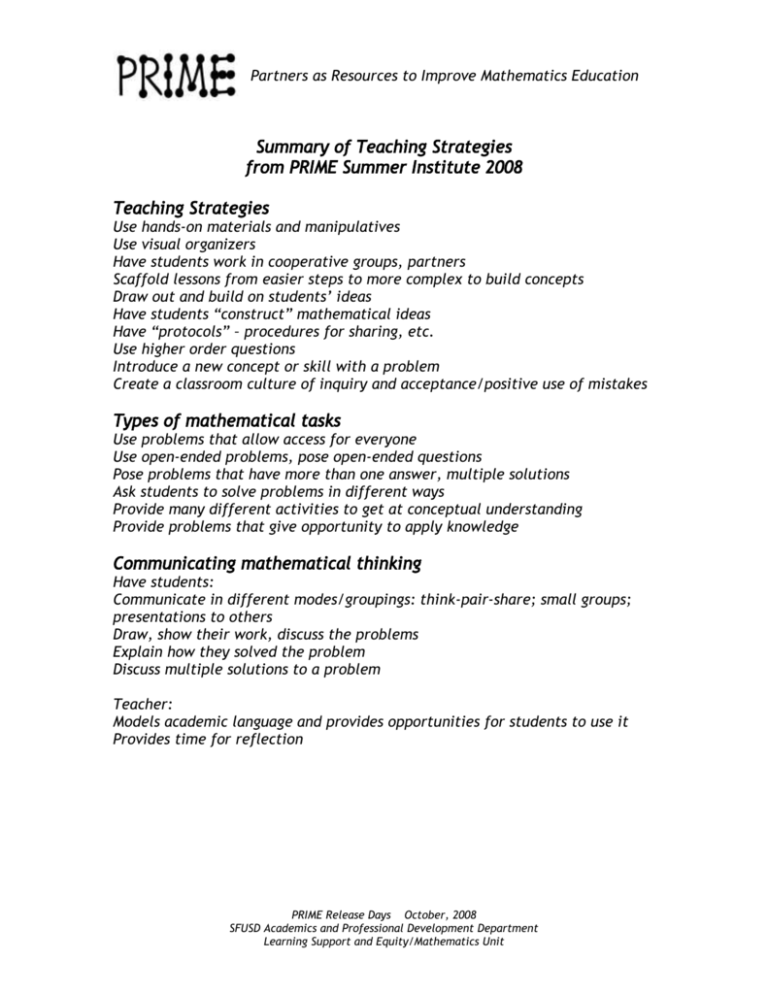
Partners as Resources to Improve Mathematics Education Summary of Teaching Strategies from PRIME Summer Institute 2008 Teaching Strategies Use hands-on materials and manipulatives Use visual organizers Have students work in cooperative groups, partners Scaffold lessons from easier steps to more complex to build concepts Draw out and build on students’ ideas Have students “construct” mathematical ideas Have “protocols” – procedures for sharing, etc. Use higher order questions Introduce a new concept or skill with a problem Create a classroom culture of inquiry and acceptance/positive use of mistakes Types of mathematical tasks Use problems that allow access for everyone Use open-ended problems, pose open-ended questions Pose problems that have more than one answer, multiple solutions Ask students to solve problems in different ways Provide many different activities to get at conceptual understanding Provide problems that give opportunity to apply knowledge Communicating mathematical thinking Have students: Communicate in different modes/groupings: think-pair-share; small groups; presentations to others Draw, show their work, discuss the problems Explain how they solved the problem Discuss multiple solutions to a problem Teacher: Models academic language and provides opportunities for students to use it Provides time for reflection PRIME Release Days October, 2008 SFUSD Academics and Professional Development Department Learning Support and Equity/Mathematics Unit

